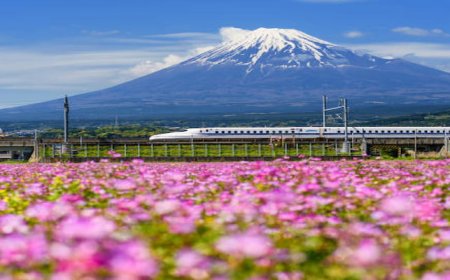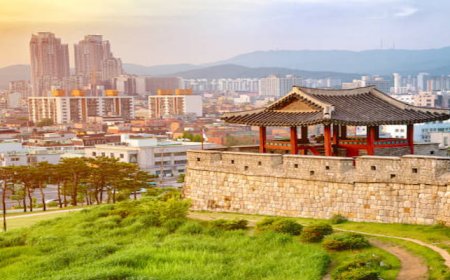Why Responsible Trekking Matters in the Himalayas
The Himalayas, with their towering peaks, alpine meadows, and spiritual significance, are one of the world’s most breathtaking natural wonders. However, as trekking in the region becomes increasingly popular, the impact of human activity on its fragile environment has grown significantly.
The Himalayas, with their towering peaks, alpine meadows, and spiritual significance, are one of the worlds most breathtaking natural wonders. However, as trekking in the region becomes increasingly popular, the impact of human activity on its fragile environment has grown significantly. That's where the concept of responsible trekking comes inan approach that allows adventure lovers to explore the mountains without compromising the ecological balance or local culture.
Whether you're embarking on the beginner-friendly Nag Tibba Trek or taking on the challenging Bali Pass Trek, understanding and practicing sustainable trekking is crucial for preserving the Himalayas for future generations.
What is Responsible Trekking?
Responsible trekking refers to the practice of exploring nature in a way that minimizes environmental damage, respects local communities, and supports conservation efforts. This means:
-
Leaving no waste behind
-
Using eco-friendly gear
-
Respecting wildlife and flora
-
Supporting local businesses and guides
-
Being culturally sensitive
When trekking in sensitive regions like the Himalayas, every small step counts.
The Himalayan Ecosystem is Fragile
The Himalayas are not just mountainstheyre the lifeline for millions of people who depend on the rivers, forests, and biodiversity the region supports. These ecosystems are incredibly delicate and take decades, sometimes centuries, to regenerate once damaged. Popular treks like the Valley of Flowers Trek, which is a UNESCO World Heritage Site, are prime examples of areas that face environmental stress due to high footfall during peak seasons.
Popular Treks and Why Sustainable Practices Are Essential
1. Nag Tibba Trek
As a short weekend trek located near Mussoorie, the Nag Tibba Trek draws large numbers of beginners and families. While its relatively easy, the growing number of visitors has led to increasing litter and trail erosion. Responsible trekkers can make a difference here by carrying back their waste, avoiding plastic use, and encouraging others to do the same.
2. Surya Top Trek
One of the lesser-known but incredibly scenic trails, the Surya Top Trek offers magnificent views without the crowds. The absence of heavy traffic makes it a great opportunity for eco-conscious trekking. Choosing this offbeat trail over commercial ones helps reduce pressure on more crowded routes while still offering a rewarding experience.
3. Dodital Trek
Surrounded by thick forests and known for its serene lake, the Dodital Trek is an ideal nature retreat. But like all popular routes, it faces challenges such as forest degradation and water pollution. Trekkers should avoid using harmful soaps or detergents near the water bodies and ensure they don't disturb the local wildlife.
4. Brahmatal Trek
A winter gem in Uttarakhand, the Brahmatal Trek attracts many during snow season. However, trekking during winters means a higher risk of creating lasting footprints in the snow-covered environment. Staying on the marked trails and not damaging snow-laden flora is essential here.
5. Pangarchulla Trek
Known for its tough terrain and rewarding summit views, the Pangarchulla Trek is not for the faint-hearted. Its high-altitude meadows and delicate ridgelines require extra care from trekkers. Avoiding campfires, limiting group sizes, and using reusable gear can significantly lessen the treks impact.
6. Kuari Pass Trek
Famous for panoramic views of Nanda Devi, the Kuari Pass Trek was once traveled by Lord Curzon himself. Its increasing popularity demands strict adherence to responsible trekking principles. Trekkers should use eco-friendly sanitary solutions and support local homestays instead of commercial lodges.
7. Bali Pass Trek
A demanding trek through glacial zones and alpine ridges, the Bali Pass Trek links Har Ki Dun Valley to Yamunotri. The remote nature of this trek means trekkers must be completely self-sufficient. Zero-waste trekking, fuel-efficient cooking, and minimal impact camping are critical in such untouched regions.
8. Valley of Flowers Trek
Arguably the most visually stunning of all, the Valley of Flowers Trek takes you through a carpet of blooming alpine flora. However, the flowers are sensitive to trampling, and the trail must be followed strictly. Picking flowers, straying off path, or leaving litter behind can irreversibly damage this unique ecosystem.
9. Kedarkantha Trek
Popular among beginners for its snowy vistas and clear summit climb, the Kedarkantha Trek sees thousands of trekkers every winter. This has led to overcrowded campsites and improper waste disposal. Opting for small groups, avoiding overused campsites, and practicing Leave No Trace are the best ways to help.
How Trekkers Can Make a Positive Impact
1. Go with Reputable Trekking Companies
Choosing companies like Himalaya Shelter, which prioritize eco-friendly operations, helps ensure that your trek has a lower impact on the environment. They often organize clean-up drives, use biodegradable supplies, and support local livelihoods.
2. Avoid Single-Use Plastics
Carry a reusable water bottle, cutlery, and tiffin box. Avoid snacks wrapped in plastic and always pack out what you pack in.
3. Follow Trail Discipline
Stick to designated trails. Straying from the path not only endangers you but also harms vegetation and can accelerate erosion.
4. Respect Local Culture
Interacting with local communities with humility and respect adds to your trekking experience. Wear modest clothing, ask before taking photos, and support local artisans.
5. Travel in Small Groups
Large trekking groups often leave a bigger footprint. Smaller groups are less disruptive and easier to manage responsibly.
The Future of the Himalayas Depends on Us
The Himalayan region is facing the consequences of unregulated tourismmelting glaciers, disturbed wildlife, deforestation, and pollution. Responsible trekking is no longer optional; it is a necessity.
By choosing sustainable practices on treks like the Nag Tibba Trek, Surya Top Trek, and Bali Pass Trek, we actively contribute to preserving these landscapes. Every biodegradable soap used, every reusable item carried, and every local guide hired adds to the collective effort of conservation.
Conclusion
Trekking in the Himalayas is a privilege. With majestic landscapes, spiritual sanctuaries, and rich biodiversity, these trails offer more than just physical adventurethey offer life-changing experiences. But with that privilege comes responsibility.
In 2025, lets not just explore the Himalayas, lets protect them. From short hikes like the Nag Tibba Trek to strenuous journeys like the Bali Pass Trek, every trail deserves respect, care, and preservation. Trek responsibly with partners like Himalaya Shelter, and ensure that the magic of the mountains endures for generations to come.








































